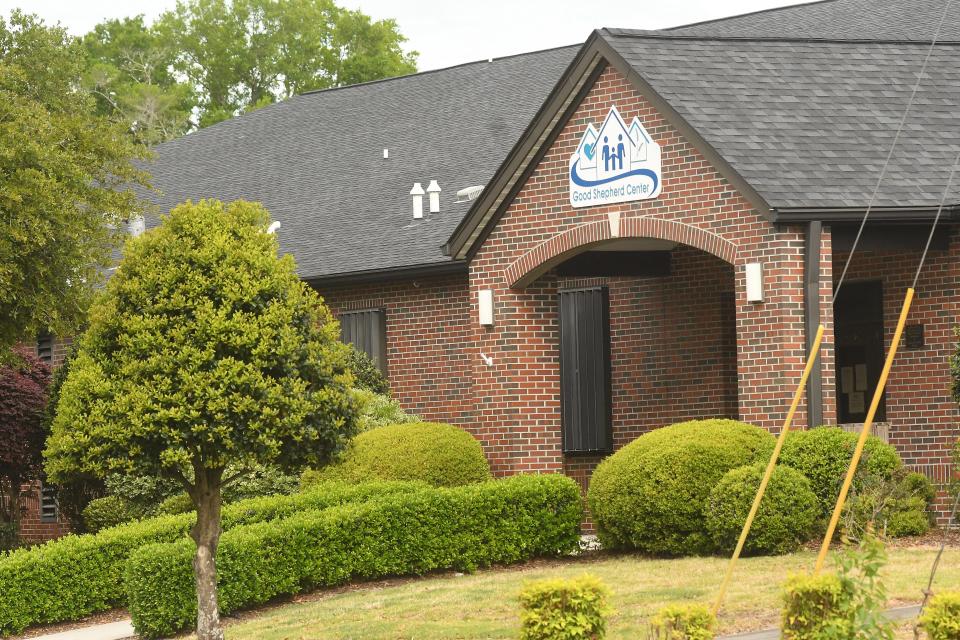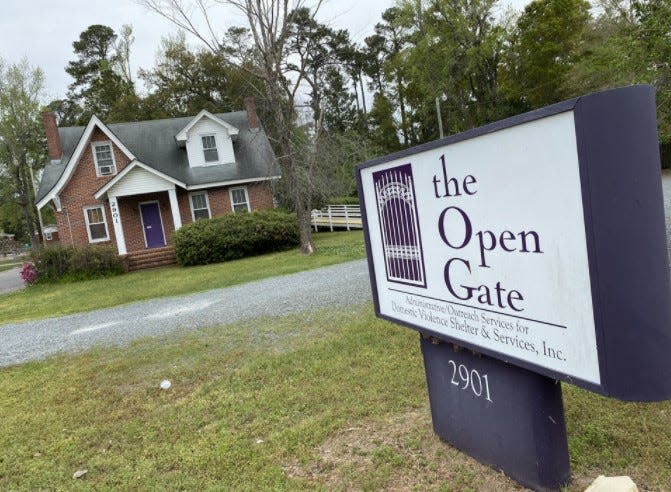For National Homeless Youth Awareness Month, here's a look at the issue in Wilmington

Amid National Homeless Youth Awareness Month in November, Anne Best, executive director of Family Promise of the Lower Cape Fear, offered insight into the challenges faced by families and children experiencing homelessness in Wilmington.
Homeless youth frequently face bullying from their peers due to the instability of their housing situation, Best said.
“We try to alleviate that stigma of being homeless,” Best said. “We always have had families picked up, whether it be in front of a house or an apartment complex, so it doesn’t look like a static building.”
Family Promise of the Lower Cape Fear provides emergency shelter to families facing housing instability in the Cape Fear region. Best has worked for the organization since 2011.
Alongside Family Promise, The Salvation Army Cape Fear, Good Shepherd Center, Coastal Horizons Center, and many other shelters and organizations serve families and children experiencing housing instability.
Coastal Horizons Center currently runs a homeless shelter, Open House Emergency Youth Shelter, for youth between the ages of 6 and 18 years.
Katrina Knight, executive director of Good Shepherd Center, said unaccompanied youth experiencing homelessness are typically referred to this nine-bed Coastal Horizons Open House facility.

While Open House is the sole facility in the area dedicated exclusively to housing homeless and runaway youth, Family Promise, Good Shepherd Center, and other local shelters directly accommodate families consisting of juveniles.
“Most young people are unhoused along with their mothers [or] their parents,” Knight said.
As for law enforcement in Wilmington, Sgt. Ron Evans from the Wilmington Police Department said officers generally engage with homeless populations consisting of single adults.
“I believe we had contact with juveniles in the early days of the team being brought on,” Evans said, adding that he could only recall one or two cases.
What factors contribute to homelessness in Wilmington?
Domestic violence largely contributes to housing instability faced by families seen by Family Promise, Best said.
Approximately "86% of the families we work with have had some sort of domestic violence in their history or family,” Best said, adding that the organization partners closely with The Open Gate Domestic Violence Shelter and Services Inc. in Wilmington.

Increasing rent prices also present a significant challenge for those experiencing homelessness, Best said.
“The cost of rent has increased,” Best said. “[There is] a lack of workforce housing [and] affordable housing for people who are in the service industry.”
This issue was exacerbated following the COVID-19 pandemic, Best said.
“A lot of people did not have the income to support the increased rental amounts, so they were evicted,” Best said. “Now, not only are they working with barriers of low income and high rental amount, but they are also having to overcome the barriers of an eviction.”
Other key barriers impacting families facing housing instability include inability to afford daycare and inability to access mental health services, Best said.
Lt. Greg Willett, public information officer with the Wilmington Police Department, said it appears that access to mental health services is deteriorating.
“I think it’s fair to say from a police officer’s standpoint, the mental health infrastructure in North Carolina is not what it used to be for whatever reason,” Willett said.
Evans said that drug and alcohol abuse can be contributing factors.
Lack of access to affordable healthcare, incarceration, and rental and housing discrimination also contribute to homelessness nationwide, according to the National Alliance to End Homelessness.
What risks do homeless populations face?
Regardless of age, individuals faced with homelessness encounter a range of challenges and risks.
Willett addressed safety hazards faced by people without housing in Wilmington.
“That happens a lot in the form of property crime,” Willett said, commenting on crimes most frequently committed upon homeless populations. “It also happens a lot in the form of crimes against person.”
Willett said the rates of both property crime and crimes against people would likely be skewed as many of them often go unreported.
While law enforcement officials address some of these issues, encounters between officers and homeless people often involve trespassing complaints, Willett and Evans said.
The Wilmington Police Department currently has two full-time officers focusing solely on responding to these complaints.
“We’re not going to solve homelessness by arresting our way out of it, but when a law is violated, we do have to act,” Willett said.
However, for those without stable housing, evading trespassing and other criminal charges can prove challenging.
As of 2019, homeless individuals were 11 times more likely to be arrested than a housed person nationwide, according to the National Law Center on Homelessness and Poverty.
It is also common for homeless individuals to become victims of sexual assault, particularly for homeless women and LGBTQ youth, according to the National Sexual Violence Resource Center.
Homeless populations are also at increased risk for contracting infectious and non-infectious diseases, mental illnesses, alcohol and substance abuse disorder, diabetes, and heart and lung disease, according to the Centers for Disease Control and Prevention.
Rates of homelessness within North Carolina
Across North Carolina, just under 10,000 people experienced homelessness in 2022, with 1,743 of them being under the age of 18, according to the U.S. Department of Housing and Urban Development Annual Homelessness Assessment Report.
Across the United States, Black and indigenous populations continue to be overrepresented among those experiencing homelessness, according to the report.
Willett said the homeless population in Wilmington increased drastically within the past five to 10 years.
Evans agreed.
The rates of homelessness appear to be increasing from year to year based on personal experience and observation, Evans said.
“From my observation, I believe that population has increased at least since [the Getting Home] initiative began back in November or December of last year," Evans said.
Further resources for homeless youth, adults, and families
For more information about how to get involved in reducing homeless in Wilmington or to access shelter and emergency resources, contact the following:
Family Promise of the Lower Cape Fear: 910-769-4730
Good Shepherd Center: 910-763-4424
Coastal Horizons Center: 910-392-7306
Cape Fear Area Housing Crisis Hotline: 910-444-4998
First Fruits Ministries: 910-794-9656
Cape Fear Rescue Mission: 910-343-0366
Linc Inc.: 910-332-1132
The Salvation Army of Wilmington: 910-762-7354
The North Carolina Department of Health and Human Services: 919-855-4800
Eden Village: 910-200-7571
This article originally appeared on Wilmington StarNews: Homeless youth and children in Wilmington face challenges

